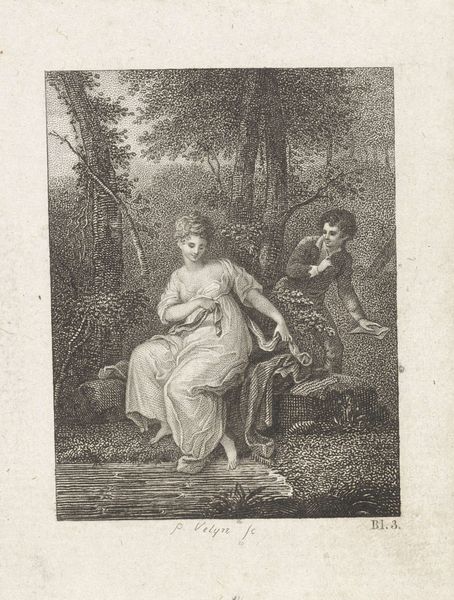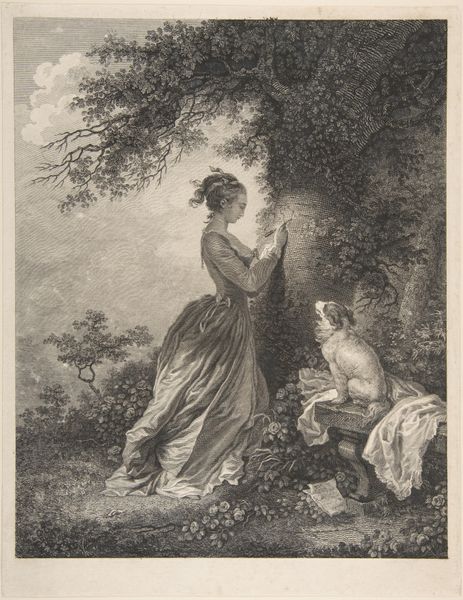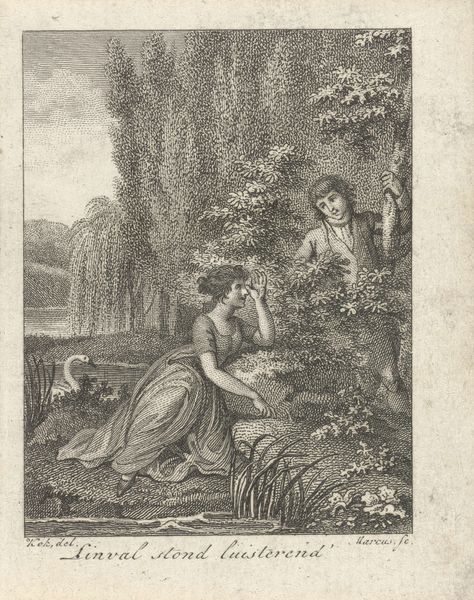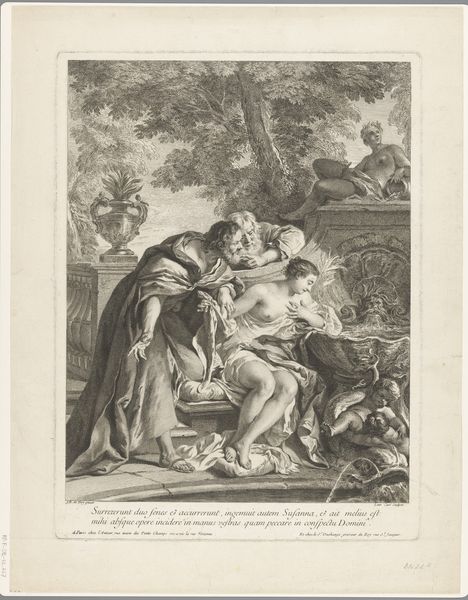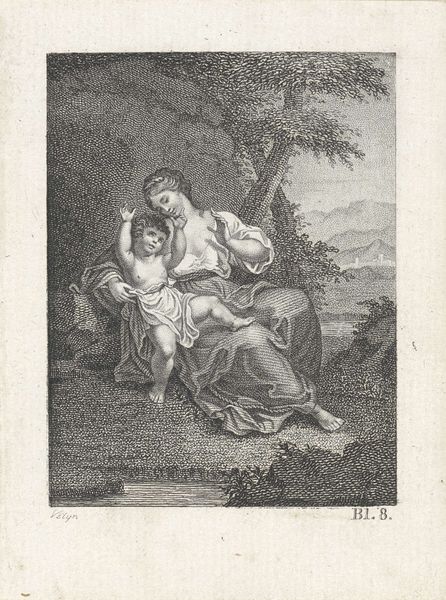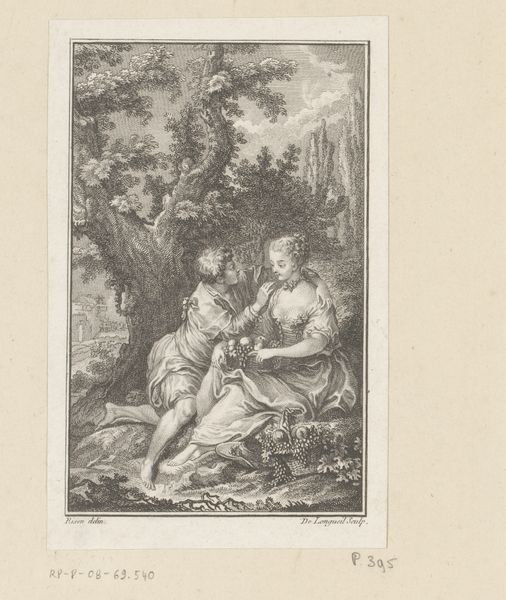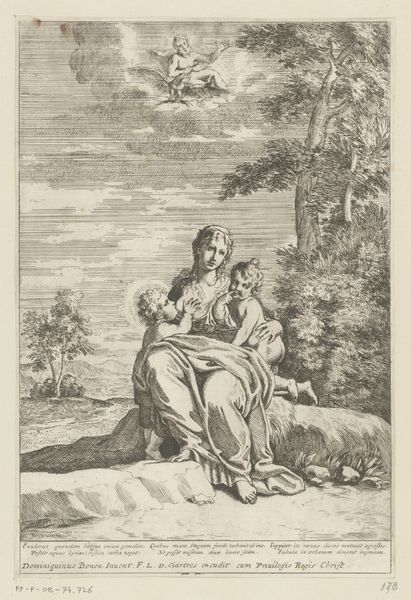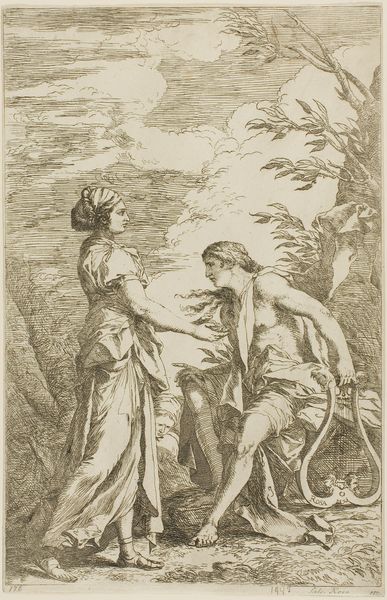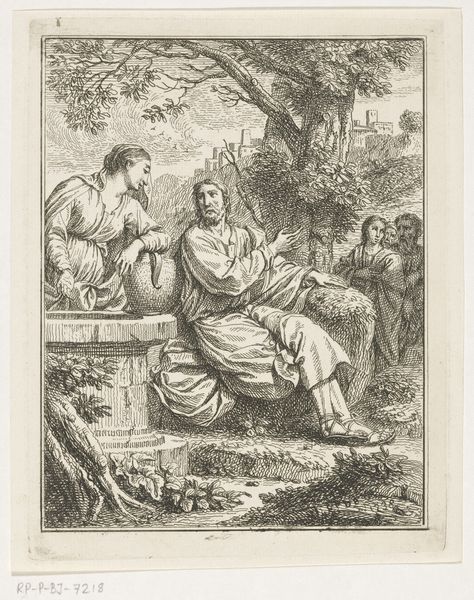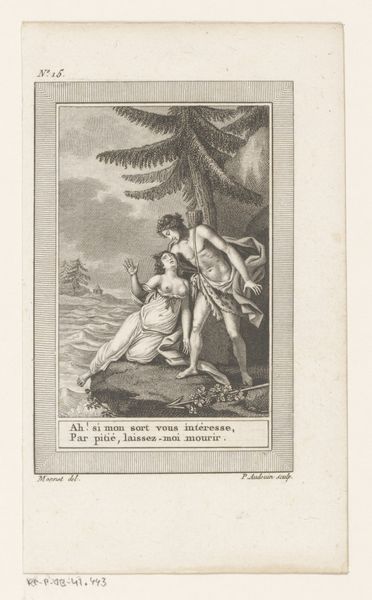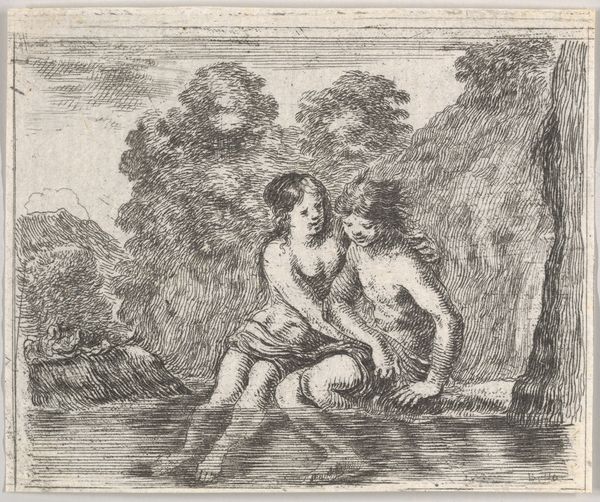
Dimensions: Plate: 9 5/16 × 6 5/8 in. (23.7 × 16.9 cm) Sheet: 13 1/16 × 9 5/8 in. (33.2 × 24.5 cm)
Copyright: Public Domain
Editor: We're looking at Giovanni David's etching, "The Death of Procris," made sometime between 1770 and 1790. It's a baroque-style print depicting a dramatic scene in a forest, seemingly lifted from a tragic myth. The composition feels unbalanced; there's a lot of negative space in the sky, which makes the figures appear confined. How do you interpret this work? Curator: What strikes me immediately is how this work stages male anxiety around female agency and power, drawing on deeply embedded patriarchal narratives. Procris, in Ovid's telling, is killed because of her husband Cephalus's jealousy and suspicion. Isn't the "hunt" here really about the hunter’s paranoia and control, played out on the woman's body? What do you make of the active pose and near nudity of the female figure? Editor: I guess I hadn't considered it from a feminist perspective. I was more focused on the overall narrative, that Cephalus mistakenly killed Procris because he suspected her of infidelity. Her pose does seem deliberate. Is David commenting on the injustice faced by women in classical myths, or just illustrating a dramatic story? Curator: It’s hard to say definitively, of course, but I think the piece highlights a larger problem: the silencing and objectification of women within historical narratives, a violence deeply rooted in the very structures that perpetuate this image, both visually, socially, and psychologically. Where does the fault really lie here? What elements within this depiction challenge our traditional interpretation of the myth itself? The image doesn't simply illustrate; it implicitly interrogates, doesn’t it? Editor: That makes sense. I was initially looking at it from an aesthetic point of view, but you’ve helped me see how it reflects broader issues of gender and power. Curator: Precisely! And those broader issues inform the aesthetics and are, in turn, informed by it. The image makes us think critically not just about a single story but the larger narratives that shape our understanding of the world.
Comments
No comments
Be the first to comment and join the conversation on the ultimate creative platform.
